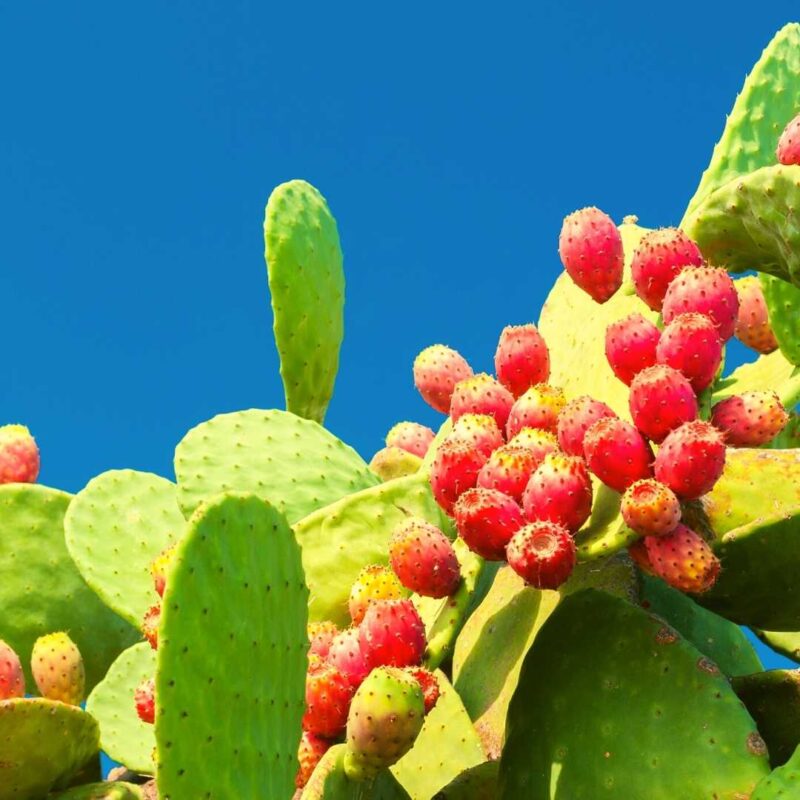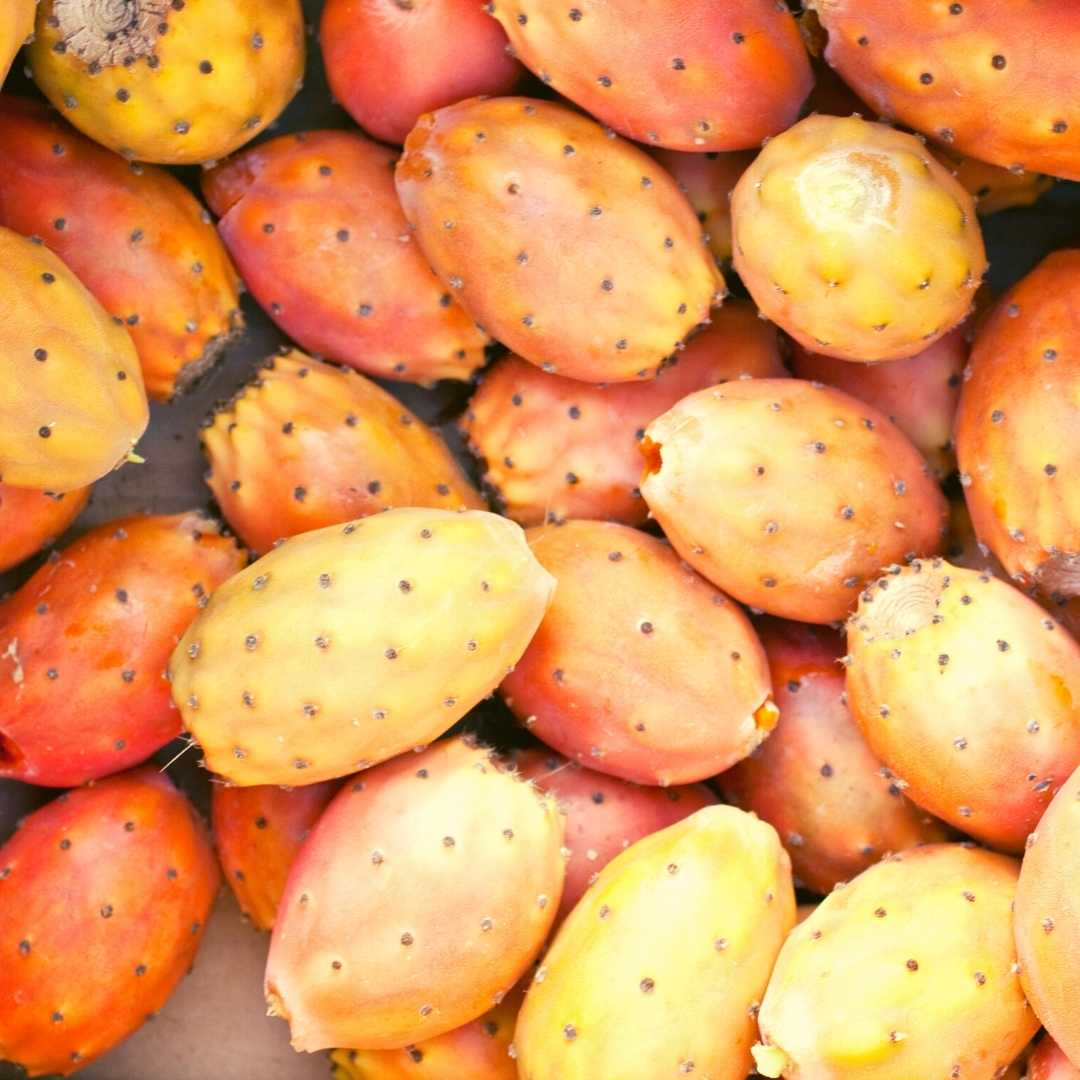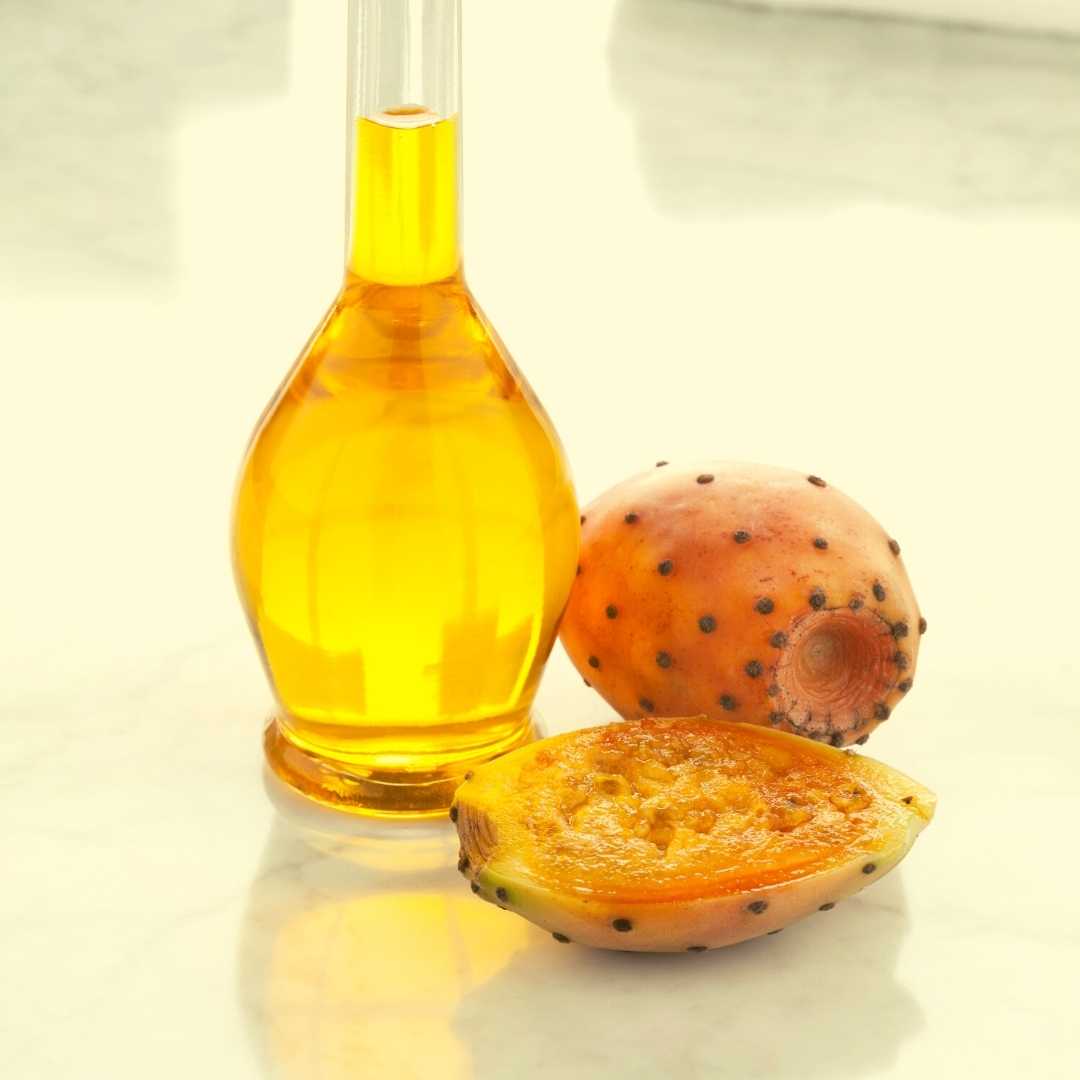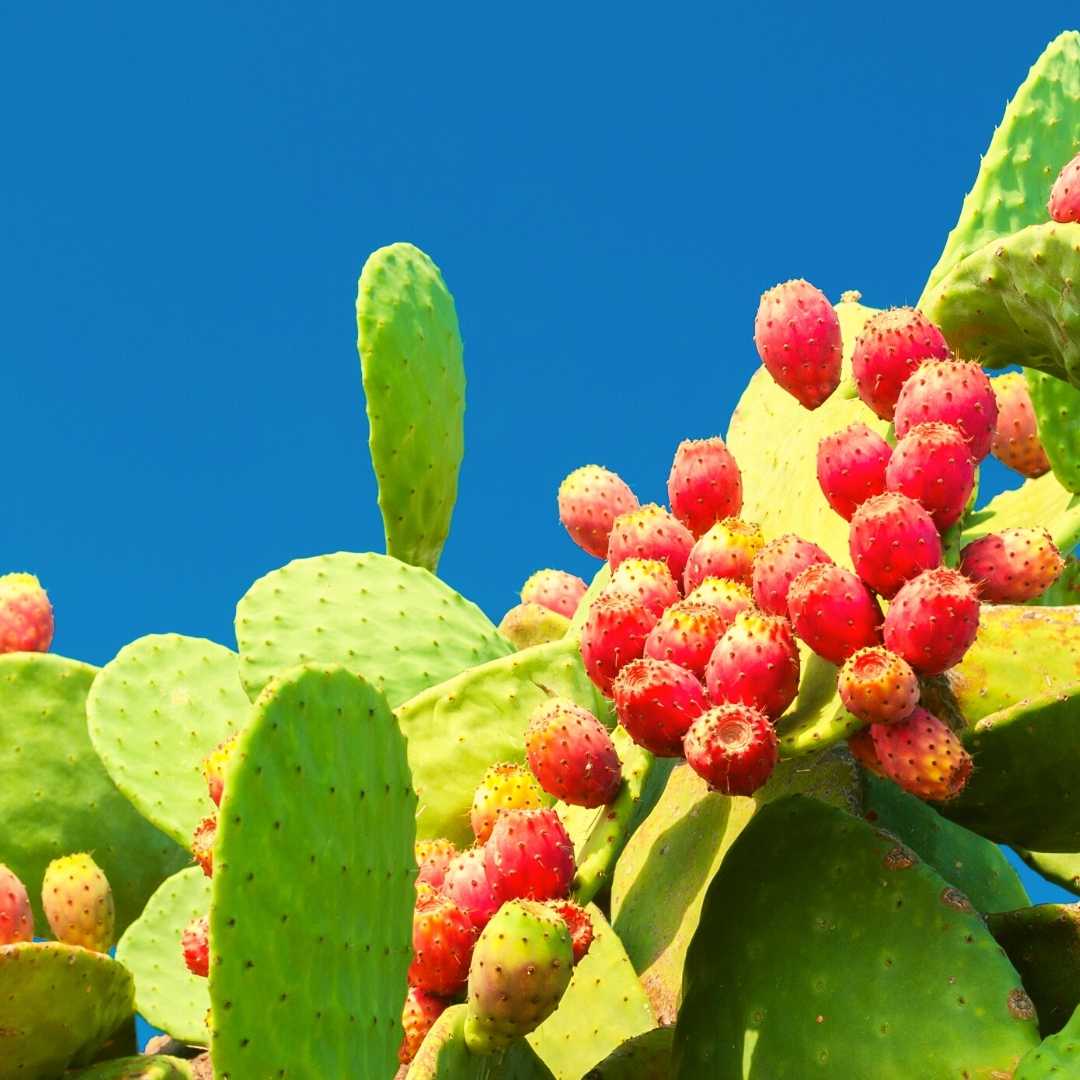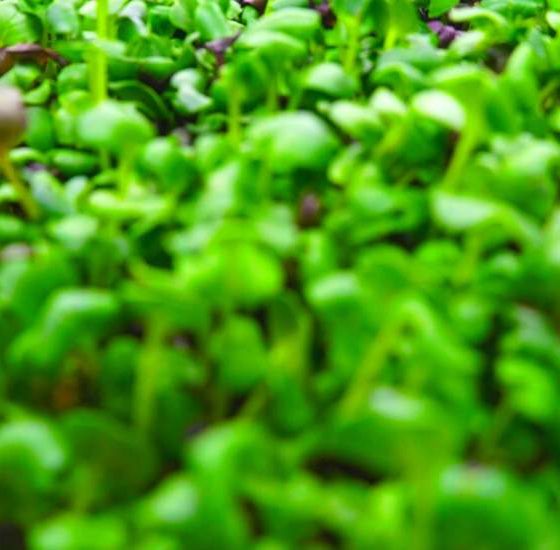Prickly Pears are abundant throughout Gozo but what benefits do they have?
Foraging Prickly Pear should be standard on Gozo Here’s Why
We’ve seen it pop up a lot over the last year or so. Have you? Maldonado Restaurant currently has it on the menu and top beauty brands are adding this natural cactus into all manners of products claiming it benefits our skin. As part of our Foraging Weeds For Health Series, Heléna Szöllősy drills down on the details of these natural beauties, the Prickly Pear.
Opuntia ficus-indica -L
Botanical Name: Opuntia ficus-indica -L Synonyms: Opuntia ficus-barbarica, Cactus decumanus, Opuntia amyclaea, Opuntia cordobensis, Opuntia gymnocarpa, Opuntia hispanica, Opuntia maxima Family Name: Cactaceae Maltese Name: Bajtar tax-xewk Common Names: Barbary fig, Cactus pear, Nopal cactus, Prickly Pear, Spineless cactus Meaning of the Name: Opuntia, from Greek, the name used by Pliny for a different spiny plant which grew around the town of Opus in Greece, ficus, from Latin, the Latin words for fig - ficus, fica (and from them the English word ’fig’), derive from the Hebrew word pag פג, meaning ’unripe fig’ indica, Indian.
DESCRIPTION
The perennial shrub Opuntia ficus-indica can grow up to 3-5m in height, with thick, succulent and oblong to spatulate stems called cladodes. It has a water repellent and sun reflecting waxy epidermis and thorns for leaves. Cladodes that are 1–2 years old produce flowers, the fruit’s colours ranging from pale green to deep red. The plant’s flower in three distinct colors: white, yellow, and red. The flowers on Gozo first appear in early May through the early summer till July. The fruits ripen from August through October. The fruits are up to 10 cm long and 9 cm wide.
- Habitats: dry arid and rocky places
- Range: Mediterranean Basin, Middle East, Northern Africa
- Status for Malta: Not native, introduced in the last 500 years from foreign countries and now naturalised throughout the Maltese islands. Very common in the wild.
- Parts Used: flowers, fruit, leaves, seed, stems,
- Herbal Actions: Antispasmodic, Antiviral, Anti-inflammatory, Antioxidant, Anti-coagulant, Diuretic, Emollient
- Main Active Constituents: betanin, betalains , carotenoids , citric acid, essential amino acids, flavonoids (quercetin, kaempferol, and isorhamnetin), indicaxanthin, minerals (calcium, magnesium, phosphorus, potassium), mucilage, pectin, polyphenols, sugars, vitamin C, water-soluble fiber.
INTERNAL USES:
The flowers and stems are antispasmodic, diuretic, and emollient. The flowers are astringent and are used to reduce bleeding and treat problems of the gastrointestinal tract, especially diarrhea, colitis, and irritable bowel syndrome. The flowers are also used in the treatment of an enlarged prostate gland (BPH). Prickly pear has a long history in traditional Mexican folk medicine for treating diabetes. It contains fiber and pectin, which can lower blood glucose by decreasing the absorption of sugar in the stomach and intestine and is used for type 2 diabetes. Prickly pear lollipops are sometimes used as a weight loss aid to treat obesity and overweight, function as an appetite suppressant – in other words, it does not allow one to eat excessively and become obese.
It is also used to fight viral infections and kill viruses in the body. The cactus pulp and juice are used to treat stomach swelling, digestive problems, and urinary tract infections. Prickly pear extract was shown to ease the unpleasant effects and pain of an alcohol hangover, provided it is used before drinking.
Prickly pear cactus pectin decreased LDL concentrations and led to a drop in total cholesterol levels. It is effective in lowering blood cholesterol levels and, at the same time, it facilitates digestion of nutrients, thereby aiding in controlling the glucose levels in the bloodstream. The latest researches have revealed that ingestion of foods that have high fiber content facilitates in protecting against a variety of ailments, for instance, heart disease, diabetes, and colon disorders. Prickly pear cactus is really a wonderful plant that encloses a vegetable protein that aids in decreasing cellulite (lumps of fat deposits in the thighs and buttock) as well as diminishes excessive fluid retention by the body. Amino acids enclosed by this plant are useful in providing the body with energy as well as lessening fatigue.
In modern holistic medicine, prickly pear cactus is promoted as a superfood and it’s available as an extract in supplements.
External Use:
- The cactus pulp and juice is used to treat burns and skin wounds.
- The split stems have been bound around injured limbs as a first aid measure. The plant’s gel-like sap is often used as a hair conditioner
Edible Use:
- Flowers, Fruit, Pads And Seeds.
- Prickly pear is widely cultivated and commercially used in juices, jellies, candies, teas, and alcoholic drinks.
The sweet and gelatinous fruit can be eaten raw, cooked or dried for later use. It’s very refreshing, similar to a watermelon in flavour, they taste a little like a cross between a melon and a fig. They are typically eaten, minus the thick outer skin, after chilling in a refrigerator for a few hours. The bright red/purple or white/yellowish flesh contains many tiny hard seeds that are usually swallowed, but should be avoided by those who have problems digesting seeds.
Cook the watery, mucilaginous pads like french beans, eat the flowers raw, and ground the seed into a meal.
Other uses
- The gum of this plant, obtained from the stem is used as a masticatory or mixed with oil to make candles.
- The gum exuded by prickly pear cactus also has industrial use. The juice of the boiled stem segments is very sticky. It is added to plaster, whitewash, etc so to make it stick better to the walls.
- Opuntia ficus-indica is planted in hedges to provide cheap but effective erosion control in the Mediterranean basin.
Precautions:
The plant has numerous minutely barbed glochids (hairs) that are easily dislodged when the plant is touched and they then become stuck to the skin where they are difficult to see and remove. They can cause considerable discomfort. Nausea, increased stool volume and frequency, mild diarrhea, and abdominal fullness are the most common side effects.
Make Prickly Pear Salad Dressing
Ingredients:
- ½ cup of puree after boiling the Prickly pear fruit
- 1/3 cup sunflower or soybean oil
- 1 tsp salt
- 1 tsp sugar
- 4 tbsp tarragon vinegar
Preparation:
Put all the ingredients into a jar and shake well to mix. Pour over a fruit salad or a green one. Enjoy.
Author : Heléna Szöllősy. Editor: GITH

Helena is an expert on the medicinal properties of plants having trained in Herbal Medicine and Naturopathy, specialising in Phytotherapy including Homeopathy, Aromatherapy, Apitherapy and Bach Flower Therapy.
Want to learn what else you can forage on Gozo? Click here.

